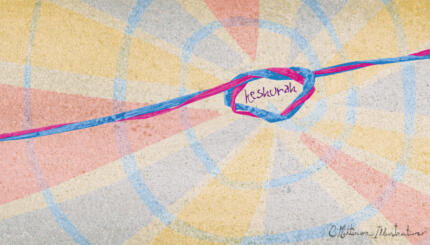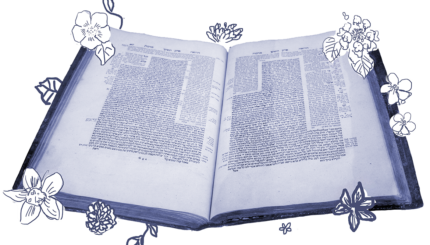The Book of Genesis is nothing if not a story of dysfunctional families.
Adam and Eve, Cain and Abel, Hagar, Sarah and Abraham, Isaac and Rebecca, Leah and Rachel: again and again we read of strife and acrimony, miscommunication, jealousy, even fratricide.
We shall focus here on two of these unfortunate cases.
Esau and Jacob are locked in struggle literally from before birth. The climax of their tragic relationship is when at his mother’s urging Jacob deceives his blind father and steals the blessing intended for his sibling Esau. Esau vows to kill his brother.
Jacob favors one son over all the other 12. Spoiled Joseph has illusions of grandeur that he cannot keep to himself. His brothers come to hate him; they ultimately try to kill him. Leaving him for dead, they lie through their teeth as they present to their father ‘evidence’ that a wild animal has devoured him.
This is not however the whole story. These two conflicts end up turning out very differently.
As the Book of Genesis nears its end, Jacob and his sons are reunited with Joseph, and we see Joseph’s brothers expressing true remorse. He forgives them. Peace and harmony are restored. We learn that our forefathers were not perfect. Their greatness lies in their ability to recognize their sins, to repent and to make amends. Like all of us they are broken, but they know — and they teach us – how to put the pieces back together again.
Earlier, in Parshat Vayishlach, which we read this week, Jacob and Esau are reunited after two decades. Forgetting his past enmity towards his sibling, Esau runs towards his brother Jacob, falls upon his neck, embraces and kisses him, and they both weep tears of joy. Jacob offers lavish presents to his brother, explaining that they represent the blessing that he had stolen from his brother and that he is now returning. He asks to be accepted in forgiveness. A beautiful verse reveals Jacob’s inner thoughts as he says to himself, “If I request atonement with this gift, perhaps he will forgive me.” And indeed Esau accepts both the gift and his brother’s penitence.
Our interpretive tradition lauds the reconciliation and unity of Joseph and his brothers, yet it ignores and even denies the guilt of Jacob and the repentance and reconciliation of he and Esau found in this week’s portion. Why?
The answer is clear: Joseph and his brothers is a story of ‘all in the family’, while Jacob and Esau is a tale of us and them. Joseph and his brothers make up the tribes of Israel. Unity is our desideratum. But while Jacob is our patriarch, Esau is by all accounts outside of the Jewish covenant, a different family and ultimately a different nation. He is the father of the Edomites, but he is not our father.
Furthermore, in later Jewish thought Esau represents the Roman Empire and Christendom, and by extension the whole non-Jewish world. These associations were created at times of conflict and cruel persecution, of anti-Judaism and anti-Semitism. They were founded on a forced, adversarial reading of the text that was suggested by reality as experienced by our forefathers.
Until this very day many of us still refuse to let go. Too many Jews of tradition – and I am talking primarily about religious Jews in Israel where I live — won’t let go of their enmity towards Esau and won’t let the relationship between Jews and gentiles move towards understanding and reconciliation.
There is something in our collective Jewish psychology that is preventing the healing of past wounds. As a nation we have been traumatized. Almost 2,000 years of anti- Judaism and anti-Semitism have left their mark on us. Our wounds are still raw and painful. We say at the Passover aeder that “in every generation they come to destroy us”, and we yet cannot find it in ourselves to accept that today this is not necessarily always the case.
We unconsciously read our fears back into Scriptures, which then ends up confirming them. We refuse to let ourselves see reality change, and we certainly will not take pro-active steps to change reality, because we believe the text says it cannot and will not change. As hard as it may be to admit, we suffer from a culture of victimhood that prevents us from understanding the other as he really is today and from taking responsibility to improve our situation.
Vicious cycles are not vicious for nothing. It is extremely difficult to break out of them. What is needed is a two-pronged approach of opening our eyes to see a different reality, and at the same time opening our foundational texts and rereading them to see the inspiring reconciliation of erstwhile enemies that they depict.
Reality can change; perception can change. And so can the meaning of the text. And a change in perception and a change in interpretation will help encourage us to make practical changes that will shape a better future for the Jewish People and for all those who come in contact with us.
The painting, entitled “Meeting Between Esau and Jacob, is by Italian artist Giovanni Maria Bottalla



